The stakes are high for brands during an economic crisis.
In this pandemic-driven recessionary turmoil, many beloved brands have been toppled and more could disappear. It’s not just brands in travel and conventional retail that face an uncertain future. Both offline and online businesses, and those with conventional and new business models, are filing for bankruptcy.
They include Brooks Brothers and J. Crew in apparel, Cirque du Soleil and StubHub in entertainment, and WeWork in commercial real estate. Analysts say it’s questionable whether these brands and businesses will be around a year from now.
With the ground shifting so rapidly underneath brands, a plan of action is required. Yet we cannot rely on lessons from the past. This recession is like no other in living memory, and the tools used by brand marketeers to navigate previous downturns aren’t fit for purpose. A new playbook is needed.
Enter the ‘Homebody Economy’
Many categories that were previously thought to be recession-proof are vulnerable. After all, what counts as a daily staple if you rarely leave home? Sweatpants and large TV sales soar while, according to Unilever, ice cream sales are up and deodorant sales down. The well-known “lipstick effect” of recessions past—consumers switching from expensive fashion and luxury goods to low-cost treats like designer lipstick—does not easily translate to a pandemic. And besides, who needs lipstick when wearing a mask?
Canned soup and instant coffee have re-discovered their relevance.
That said, some consumer goods brands and categories are growing — remember the mad rush for toilet paper? Unilever, P&G, and Reckitt Benckiser are “cleaning up” on pandemic-fueled growth in hygiene brand sales across everything from Ariel and Omo laundry detergent to Dettol and Lifebuoy antibacterial soap, Swiffer mop, and Bounty kitchen towel.
It’s not just hygiene and cleaning brands that are doing well. Canned soup and instant coffee have re-discovered their relevance as consumers crave comfort and convenience. This trend has reversed multi-year category declines and benefited brands like Heinz, Campbell’s Soup, and Nescafe.
But due to declines in out-of-home consumption, categories like beer, soft drinks, and bottled water have suffered declines. Out-of-home purchases typically account for nearly 50% of The Coca Cola Company’s sales.
Yet its global sales were down 28% in Q2. Sales in Q3 and Q4 are unlikely to be any better, with pubs and bars worldwide closed or operating on reduced hours, and professional sports teams in the NFL and Premier League football playing to empty stadiums.
Share losses are typically not regained, even after a crisis says Kantar.
The effects could be long-lasting for brands that lose market share. A global study by Kantar found that those brands were 70% likely to still have a lower share five years later. On the other hand, two-thirds of brand-share winners maintained their share gains. If you’ve ever been responsible for the health and future of a brand, this will surely send chills up your spine.
The success of private label brands is another challenge. More consumers have tried private label brands than ever before, due to price sensitivity and a lack of access to name brands that were out of stock in the early phase of the pandemic. According to a recent McKinsey report, 80% of US consumers who started using a private brand during the pandemic intended to continue using it.
And yet, some brands are winning. How can yours be one of them? At Cowan, we have identified ways that your brand can navigate marketing in COVID times.
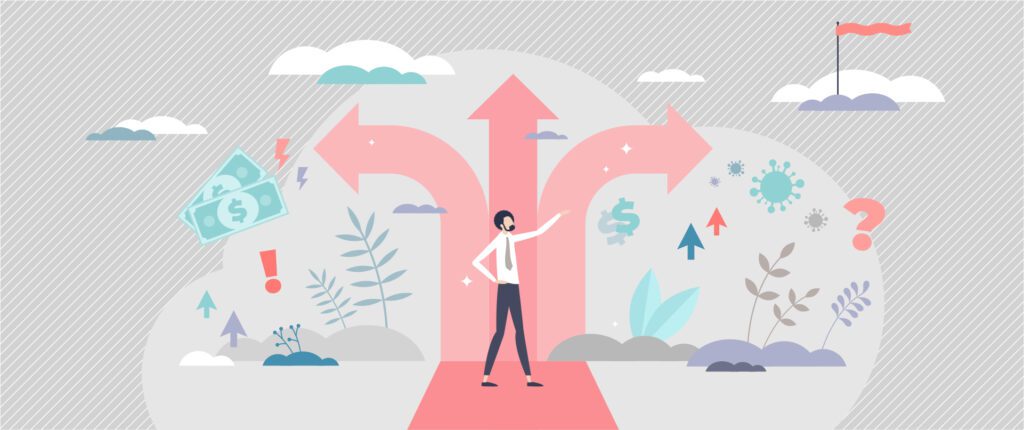
3 ways to survive volatility and thrive in recessionary times
We’ve canvased the market to come up with three important lessons that brands can follow to accelerate out of the COVID curve:
01: What your brand should STOP doing
02: What your brand should START doing
03: What your brand should CONTINUE doing
01. STOP cutting spending.
Being vocal and visible plays a key role in retaining consumers and is essential for reaching new ones. So instead of cutting spending, increase your options by better understanding where and how to reach your consumer. Then, map this new journey and then use Hard Working Assets to make your brand easy to find and recognise.
In recent years, the path to purchase has become increasingly non-linear due to the rise of influencers, social media, and e-commerce.
Consumers can “drop-in” at any number of points to buy, understand, or experience a brand. Consumers still want an immersive brand experience, and it can be powerful if you put the right experience in the right place at the right time. Conversely, when you are not there and actively engaging with consumers, you lose the sale.
That’s why companies like Unilever have increased their marketing spend in the second half of 2020 and are shifting even more to digital-driven brand activities. In fact, three-quarters of brands have shifted their marketing strategy by upping their spending on influencers. Brands need to inhabit the same digital spaces as their consumers.
SOURCES OF INSPIRATION:
In China, Lin Qingxuan (Forest Cabin) cosmetics saw sales drop by 90% in its 300+ retail stores in the first half of February, when the country entered its COVID lockdown. If circumstances had remained unchanged, Forest Cabin estimated a loss of up to RMB30 million (USD $4.26 million) a month and bankruptcy in under two months.
To avoid this fate, the brand quickly pivoted to 100% e-commerce. By the end of the month, sales for February were up 120% vs. the prior year. To achieve this remarkable turnaround, Forest Cabin trained more than 1,600 employees how to live-stream overnight. Even the founder, Sun Laichun, hosted live-streaming sales events.
“Brands are decreasing their reliance on beauty counters and shifting to online demos and live-stream selling.”
Sun Laichun and the approachable, honest selling style of Forest Cabin’s beauty advisors have always been an HWAs™ for the brand in retail, which also uniquely stood out online.
This success, and many others, have changed the face of beauty in China. Eight months on from the lockdown, all brands are systematically decreasing their reliance on beauty counters and in-person selling and shifting to online demos and live-stream selling. The path to purchase and consumer experience has fundamentally changed.

In another case of rapid response and investment in the new consumer journey, P&G partnered with e-tailer shopee.com in Southeast Asia to create an immersive e-commerce experience, Show Me My Home. This first-of-its-kind initiative featured a one-stop-shop with P&G brands and products organized by the room in which they are used. In Asia, unlike in the US and Europe, consumers feel more comfortable knowing that their brand comes from a large multi-national company. It’s a signal of trust and safety. By amplifying the P&G banner and its umbrella of products, the initiative played into consumers’ desire for safety and security.

Also tapping into the homebody economy was Unilever. Its Magnum brand teamed up with Deliveroo, the largest online food delivery company in the UK, to deliver DIY ice cream-making kits to consumers craving a treat. In doing so, it sidestepped the historic reliance of ice cream sales on occasion-driven, impulse buying at outdoor venues and small shops — typically during leisure activities and pursuits.
Magnum’s DIY ice cream kits, available for delivery on Deliveroo in the UK

02. START to actively deliver more value and relevance.
The good news is that, despite the pandemic creating a great deal of uncertainty, consumers are still shopping. A key driver in purchase decisions is communication. Since the start of the pandemic, more than one-third (36%) of US consumers have made an impulse buy based on seeing an ad. Brand communication that focuses on delivering value and relevance has made the difference, creating a positive experience and a desire to engage and purchase.
Value and relevance has long moved on from well-timed buy-one-get-one-free offers. Value and relevance across the entire offer – physical, digital, usage – collectively forms the kind of holistic value proposition that translates to a positive brand experience. Consumers still appreciate a deal—60% of global consumers say they will be more focused on value for money in future—but value isn’t driven by price alone.
Relevant messages and offers that demonstrate a true understanding of consumer needs in that moment cut through. Those that ring hollow do not, and they can also damage your relationship with consumers. According to KPMG in a Global Pulse Survey in May 2020, consumers are highly sensitized to how brands are communicating and quick to judge those they see as tone deaf. Brand trust on the whole is in decline, especially for large and global brands. Yet paradoxically, it is increasing as a driver in consumer purchasing decisions.
During COIVD more than ever, consumers want to see brands and business being genuinely helpful and putting wellbeing over profit. Unilever, for example, is famous for its purpose-driven brands. Its CEO, Alan Jope, says brand communication will be “explicitly purposeful” for brands like Lifebuoy and Domestos, exemplified by coronavirus safety messages.
SOURCES OF INSPIRATION:
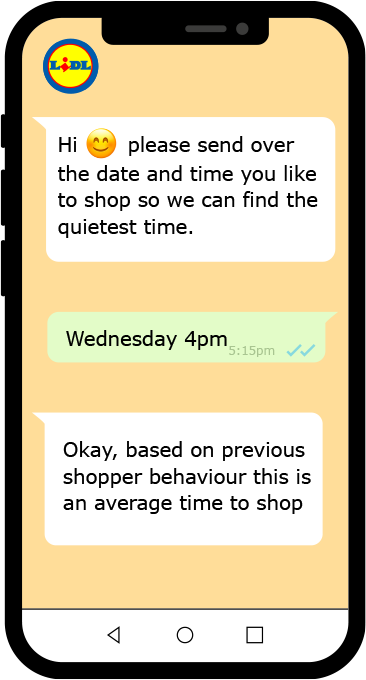
LIDL, a European supermarket retailer best known for its price/value positioning, has chosen to highlight safety over savings. It launched a chatbot on WhatsApp that enables shoppers to assess foot traffic in-store and select less busy times to go shopping.

Outside the home, entertainment venues have adapted by introducing COVID safety precautions. A glimpse at the future of cinemas comes from Layer, a design company, whose prototype Sequel Seat safeguards moviegoers. The chairs are knitted with a 3D fabric made from antibacterial material and hydrophobic copper thread for hygiene protection, woven to eliminate crevices that can become dirt traps.
The seat features removable protective screens to separate moviegoers, which can be removed when social distancing measures are no longer required. Each headrest displays the seat number and name of the person booking, avoiding the risk of moviegoers breaching social distance measures by taking the wrong seat and bringing a personal touch to the cinema experience.
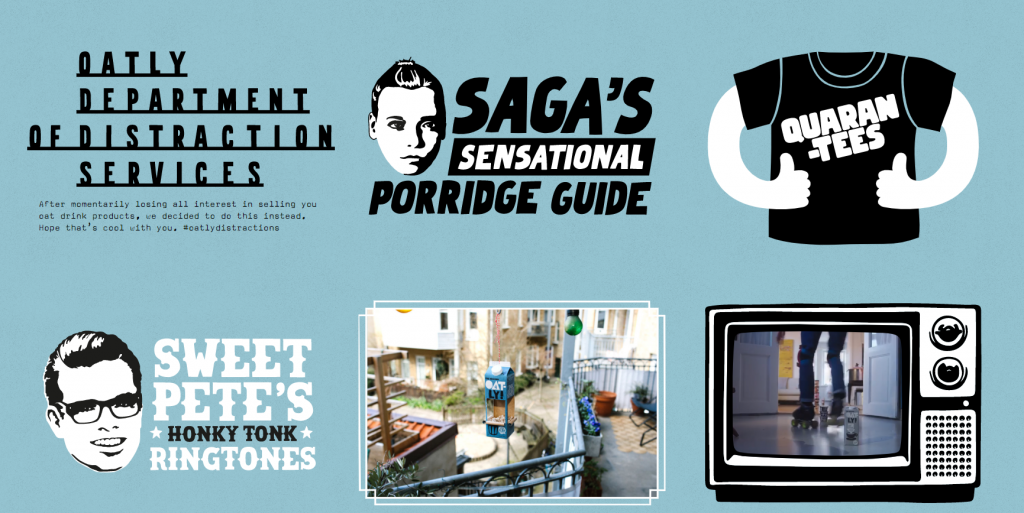
Not every piece of pandemic marketing has to be about safety to be effective. Oatly plant-based oat milk successfully extended its irreverent and playful voice as a Hard Working Asset. It launched the Department of Distraction Services to provide entertainment, activities, and DIY projects to make staying home more bearable. All activities centrally feature the product or its packaging
When it comes to delivering value in a pure economic sense, it might be tempting to rely on heavy promotions or even price cutting. But successful examples of providing value are less about straight discounting and more about investing in consumers and building a relationship with them. For example, Amazon Prime gave subscribers and non-subscribers alike free access to their movies for kids and families during lockdown. Similarly, Hollywood studios like
Focus Features and Lionsgate films offered free streaming, allowing people at home and in need of entertainment to watch current movies. Other brands looked for new ways to add value when the old ones no longer worked.

AMEX, for example, realized that many of its customers were at risk of downgrading from platinum cards. Being unable to take advantage of benefits and freebies for frequent travelers, customers could not so easily offset the
$550 annual fee of American Express Platinum. To motivate users not to downgrade to gold or green cards, AMEX offered US$5 monthly streaming subscriptions rebates, up to $10 cashback for shopping with small businesses, and a free annual premium subscription to the Calm app (usually US $59.99) to soothe pandemic-frazzled nerves. These offers, and many others, shifted value to what consumers needed in the moment.
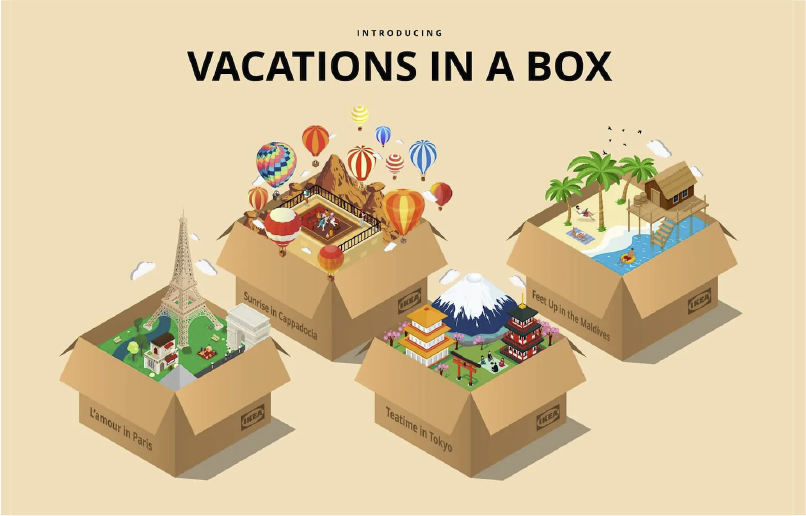
Launched in Dubai, IKEA vacations in a box deliver an immersive experience to your home to transport you to faraway dream destinations, curating existing merchandise in themed boxes.
These brands have managed to deliver real value and relevance along the consumer journey. You can do the same by leveraging your brand’s Hard Working Assets to deliver in a way that only your brand can. Hard Working Assets can lead you to ways of creating relevant and highly valued consumer experiences that purposefully build your bond with consumers.
03. CONTINUE to invest in Hard Working Assets, using them to enable brand agility.
The road ahead is uncertain and there’s low visibility for brand planning. Brands need to invest and be present on the consumer path to purchase, but it’s unclear how this path will evolve in the next 6 to 12 months. As such, brands need to be nimble and have options ready in order to respond to changes flexibly and effectively.
Hard Working Assets enable brands to not only move nimbly and be more responsive but also to ensure that investment works harder. ROI is no less important than it was pre-pandemic, perhaps more so. By employing a few, tightly focused Hard Working Assets, you can move with surprising agility and capture the opportunities in real-time, rather than be behind the curve.
By paving the path to purchase with clear HWA™ signposts, you will land the message for your brand — not the category, the zeitgeist, or the cause. Ownability (memorability + distinctiveness) is paramount to achieving ROI on marketing investment.
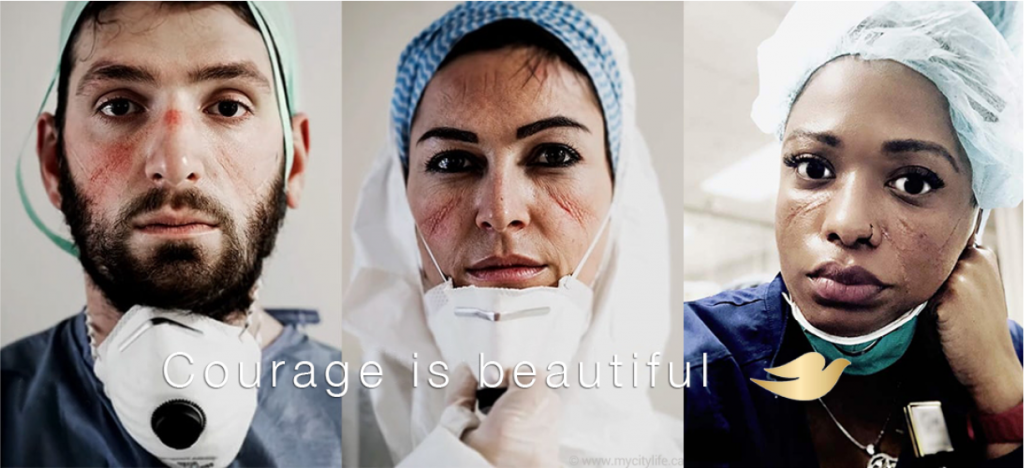
An impactful example of this is Dove’s advertising in the US. Being predominantly a cleansing brand, Dove could have easily leaned into the health and hygiene space. Instead, it leveraged one of its Hard Working Assets, its “real beauty” proposition, to launch the “Courage is Beautiful” campaign.
This celebrated the heroic efforts of health workers on the frontline whose faces were perpetually marked with creases from wearing personal protective equipment.
Resist the temptation to slow, or even cut, innovation. In our work with brands and businesses across the world, we see that successful brands are doubling down on a variety of innovation streams. They are well prepared and ready to explode from virtual into physical in the post-COVID world. Marketeers are actively readying relevant innovations, especially those which play into consumer sentiments around safety, comfort, hygiene, health, and wellness. Having innovations teed up and ready to go gives marketeers options and levers to pull at a moment’s notice.

Take Ocean Spray Cranberries, Inc. which launched Atoka plant-based herbal tonics in 2020. The concept was created last year with the idea of launching in late 2020 in the customary retail channels. But with heightened consumer interest in health and immunity, the company advanced the launch in the US to early 2020.
It quickly pivoted to a direct-to-consumer model within six weeks of the decision to launch, creating its own e-commerce and brand experience website, www.atokawellness.com. Atoka is proof that Ocean Spray will not be slowing down on innovation. Indeed, its management asserts that agility and entrepreneurship are the keys to success at this unusual time.

Or take a bite from Mondelez’s playbook. It isn’t selling biscuits and snacking—it’s selling the Oreo experience. It cleverly builds on its Oreo “stay playful” positioning with games and challenges that connect people. #cookiewithacause
In summary
These are uncertain times with low visibility for brands. The stakes are high because market share that is lost may never be recaptured. Many brands and businesses will struggle and some may no longer be around 12 months from now. Brands need to operate in a time of “never normal” and be responsive to the rapid shifts happening in channels, consumer sentiment, and spending priorities.
Without a clear understanding of Hard Working Assets, it is unlikely that your brand can operate at pace and nimbly respond to fast-changing market conditions. Worse, it is likely that you end up promoting the category as a whole rather than your brand.
So remember:
Stop cutting spending. Instead, pause to remap the consumer journey and the path to purchase for your category, and refocus spending on this journey. Use Hard Working Assets to enable nimble pivots to new channels.
Start to make your brand easily findable and increase the visibility of key messages to create memorable experiences. Use Hard Working Assets to create cut-through and positive engagement in the omnichannel clutter.
Continue leaning in to Hard Working Assets and use them as agility tools to help you to quickly respond to the changing market.
References:
Alzila | Buzz | CNN | Dezeen | Ernst & Young | Food Business News | Kantar | KPMG | Market Watch | Marketing Week | McKinsey | South China Evening Post | Spring Wise | The Drum Wall Street Journal



